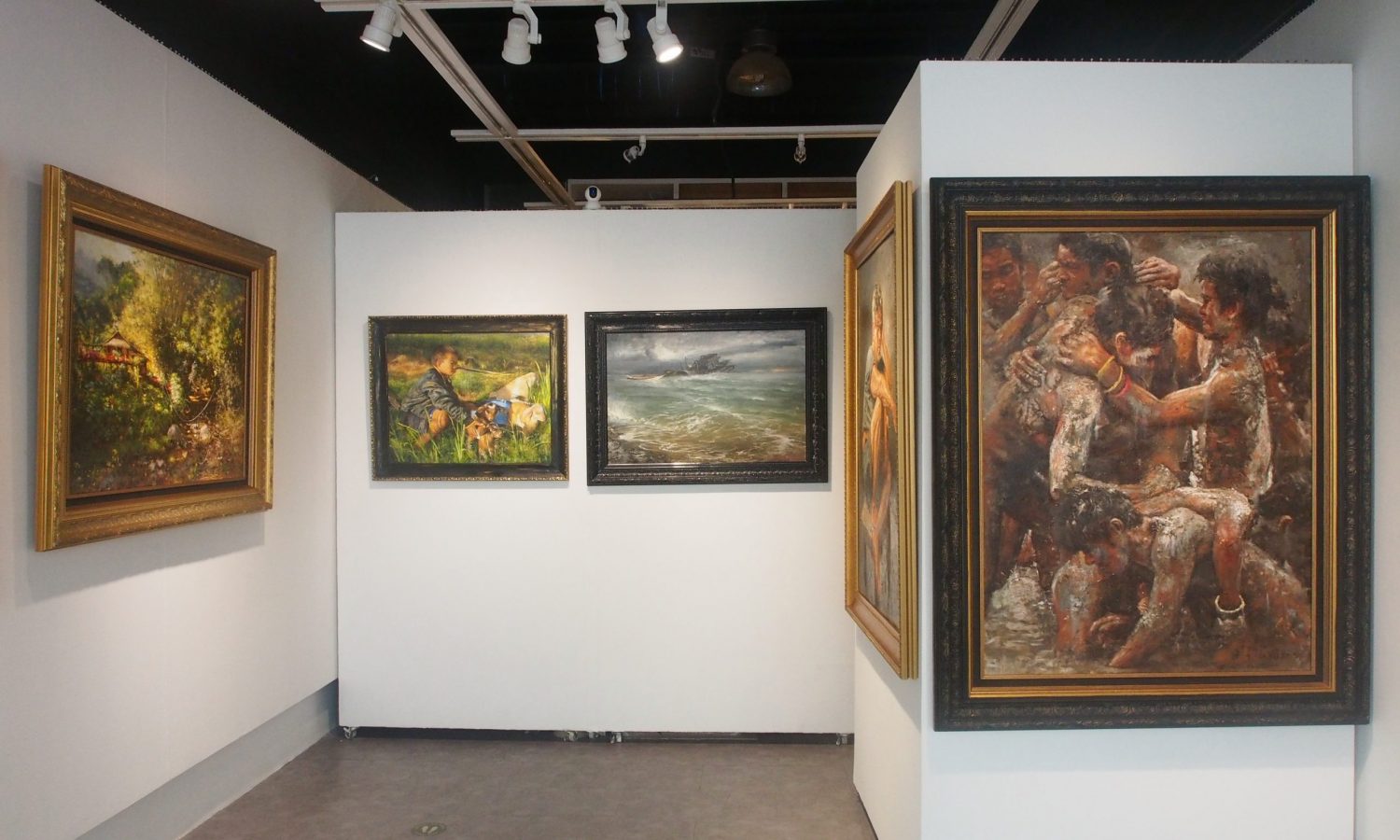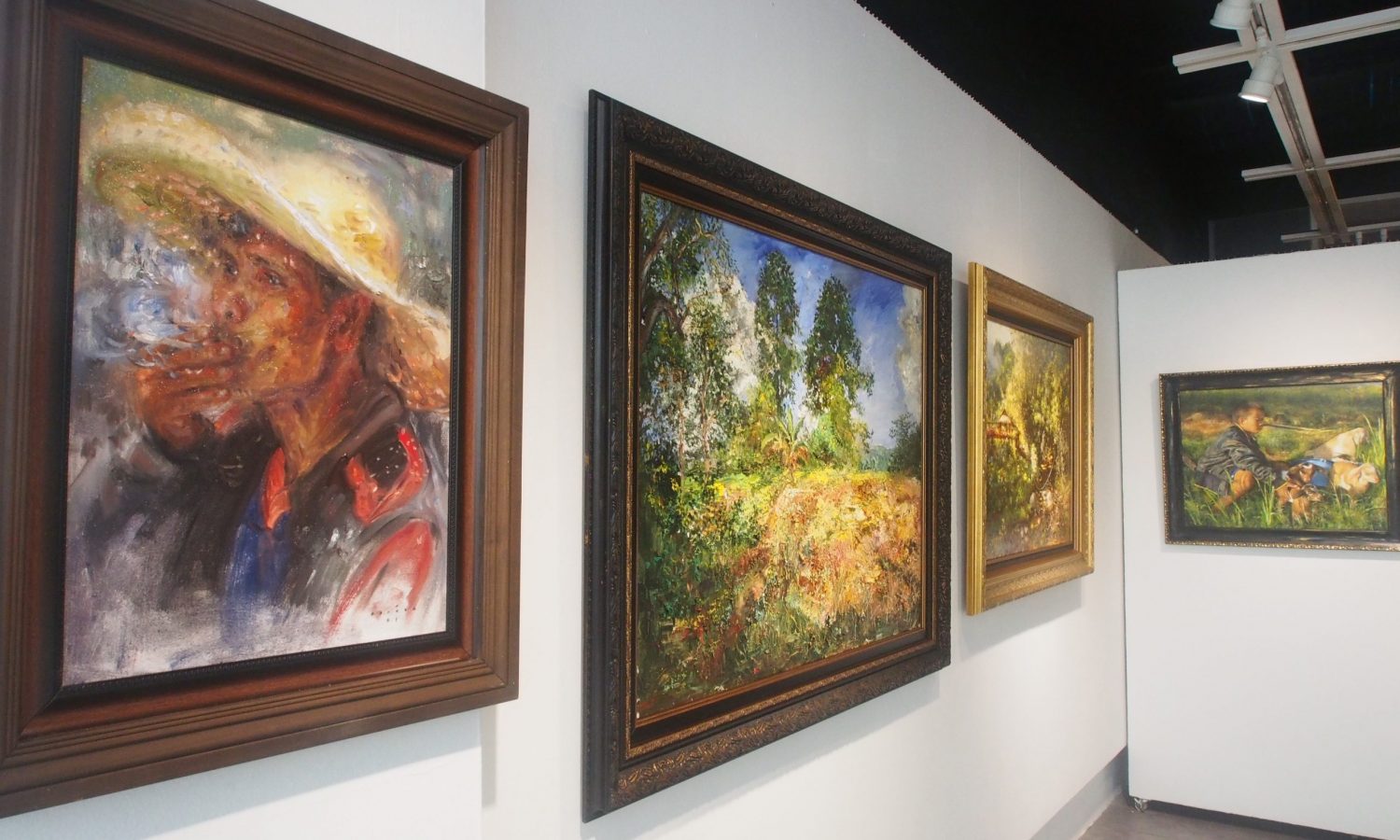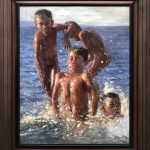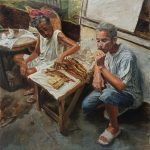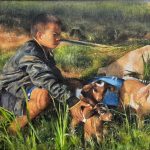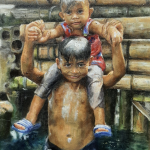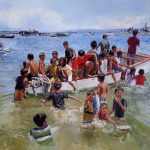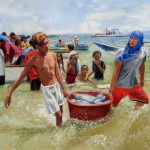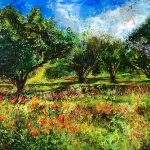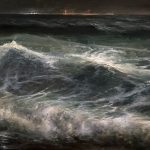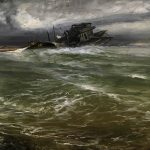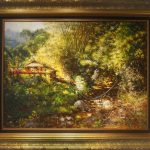JOURNEY
Raiñer Duhaylungsod | Rembert Quimada | Romar Quimada |Daniel Yu | Maria Francisca Andraianne Juarez | Mark Belicario | Orley Ypon
October 17, 2021
JOURNEY
WRITTEN BY CARLOMAR ARCANGEL DAOANA
Painting the Textures of the World
Genre themes in Philippine representational art have a rich, storied tradition, starting with Fernando Amorsolo who depicted the sights and sounds of the countryside through an idyllic and idealized lens. While the modernists would gain the upper hand in the second half of the 20th century in terms of popularity, appeal, and prestige, painting landscapes, still lifes, and scenes from ordinary life did not suffer one bit, as masters such as Vicente Manansala, Malang, and Romulo Galicano contributed to their evolving language, inflecting them with their own style and sensibility.
A group of artists from the Visayas continues to add to the gains of genre themes in the country, showing how figurative art remains instructive in revealing the hidden textures of the visible world. In the group exhibition, Journey,artists Raiñer Duhaylungsod, Romar Quimada, Rembert Quimada, Daniel Yu, Maria Francisca Andraianne Juarez, Orley Ypon, and Mark Belicario delve, explore, and present their individual voyage in the field of representation, deeply tying the medium of painting to its ability not only to convey reality but the inner realm of the artists.
This interior world is exposed by what each of the artists holds as primary subject in their works. Juarez, for instance, makes a case for the rough, light-drenched beauty of landscapes, while Belicario, on the other, shines a spotlight on seascapes, especially at night, when the ocean is suffused with a moody atmosphere, the tumble of its waves captured like glass. Duhaylungsod, Romar Quimada, and Yu also depict the sea in their works, but in the context of a human dimension, in which this watery world becomes a place of play and livelihood. The centrality of human figures is also present in the works of Rembert Quimada, who paints them with a sympathetic eye. Ypon, lastly, conveys children frolicking in mud, a subject associated with him, as well as a view of landscape that is dense, complex, and explosive with detail.
While similarities in the works of these artists exist, their personal take on them is different. Yu and Belicario evince a heightened sense of realism, while Duhaylungsod, Romar and Rembert Quimada, Juarez, and Ypon prefer a more impressionistic approach, inflected with mottling as well as subtle or pronounced impasto. Their color palettes, too, are diverse, ranging from muted tonalities to exuberant hues.
Such a pursuit of a specific subject, rendered in their own individual style, is indicative of what the artists value—from the solace of nature to the companionship of fellow human beings. The fact that genre themes have persisted for so long reveals a shared expression of a universal desire, which may be the reason why that, in spite of the countless innovations in visual arts, artists still find meaning in conveying the world through the illusionistic properties of pigment. We can never exhaust reality as every artist views it with an unfathomable heart—all the wild terrors and ecstatic joys connected with being human.
